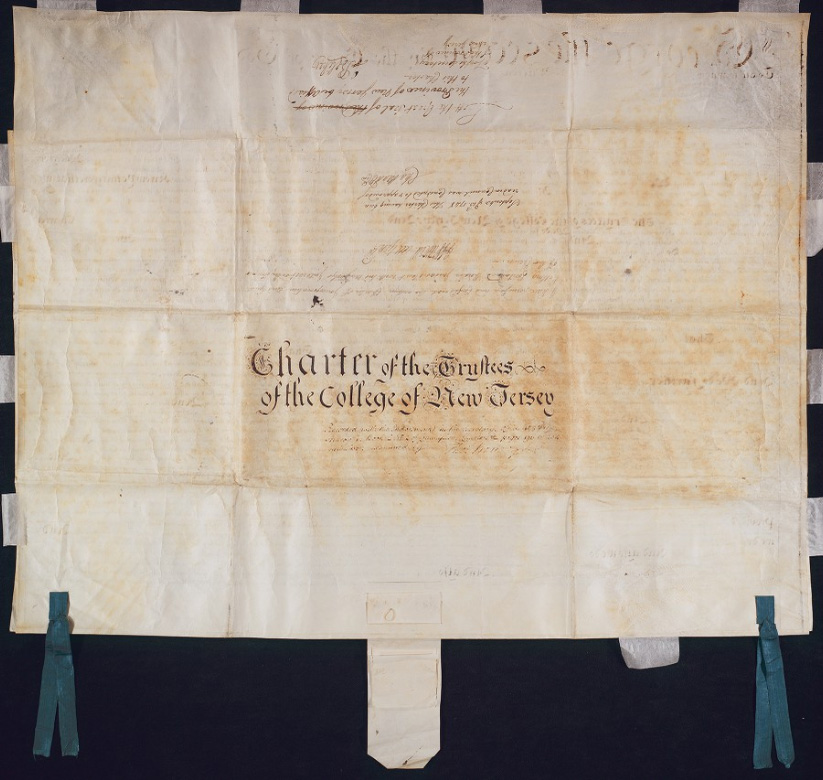
The second Charter of the College of New Jersey, bearing the seal of the Province of New Jersey, signed by several provincial officials.
Princeton University Library. Department of Rare Books and Special Collections. Seeley G. Mudd Manuscript Library. Princeton University Archives.
Founded first in Elizabeth, New Jersey in 1746, the College of New Jersey (now Princeton University) was the fourth college in the North American colonies.
The college was established in the wake of religious revivals sweeping the country which had split the Presbyterians between the “Old Side” and the “New Light.” The New Light movement emphasized greater individuality in a person’s relationship with God, while the Old Side maintained earlier traditions. Princeton was founded to produce more New Light ministers with rigorous study comparable to the more conservative institutions of Harvard and Yale. Princeton students, however, were not required to be Presbyterian.
The college first moved to Newark, where its president Aaron Burr Sr. lived at the time. It then moved to Princeton in 1756, after Benjamin and Rebeckah FitzRandolph of the Stony Brook Quaker community donated ten acres for its permanent construction. The advent of the college was no small matter for the town, bringing larger waves of visitors and a distinct Presbyterian influence. Eventually, this would largely surpass the earlier Quaker population.
As the century went on, education at the College of New Jersey became increasingly secular. In particular, sixth president John Witherspoon (see Tusculum Farm) was responsible for shifting the focus away from training ministers, leading eventually to the formation of the separate Princeton Theological Seminary in 1812.
Buildings:
Nassau Hall
The President’s House
